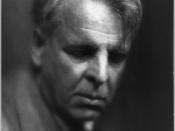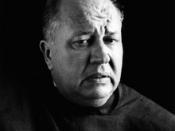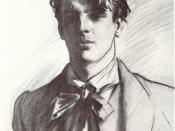1. Exact rhyme is the repetition of exact sounds. We see examples of this in lines 1 and 3 with "slow" and "go", and in lines 4 and 6 with "know" and "slow." I believe that the use of exact rhyme in this poem is extremely effective. The way each rhyme rolls off my tongue gives the poem a true sense of rhythm.
2. Slant rhyme occurs when the rhyme is not exact. Slant rhyme is seen in lines 13 and 15 with "do" and "go", and lines 10 and 12 with "how" and "slow." I did not feel as though the use of slant rhyme broke up the rhythm of the poem, I felt that it truly added to its sense of character.
Recognizing a Villanelle 1. The line of the poem that is repeated in lines 6, 12, and 18 is "I wake to sleep, and take my walking slow.
" 2. The line of the poem that is repeated in lines 9, 15, and 19 is "learn by going where I have to go." 3. The rhyme scheme of "The waking" is, aba aba aba aba aba abaa.
4. I believe that the form of this poem mirrors its content quite appropriately. The act of waking and sleeping are very organized tasks with a rhythmic sense, and this poem truly captures that essence in its form.
Protocol: I have always admired the writing styles of Edgar Alan Poe, and in my own writings I have always tried to emulate his style. Theodore Roethke does just this in "The Waking." He writes with the influence of his mentor, poet, William Butler Yeats. I truly enjoyed the mechanical and rhythmical aspects of "The Waking." The repeating exact rhymes and the Villanelle form provide a true rhythmical beat to the poem, thus creating an absolute effect for the reader.





